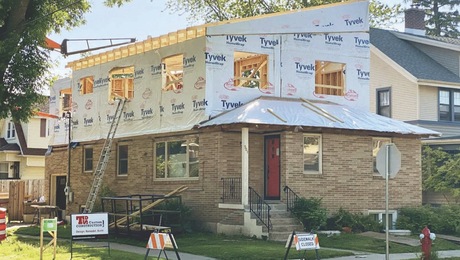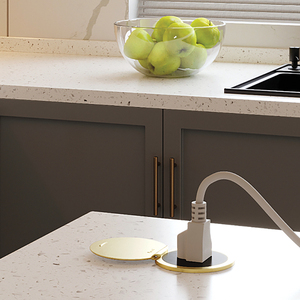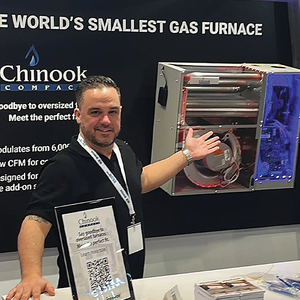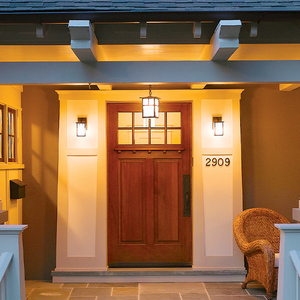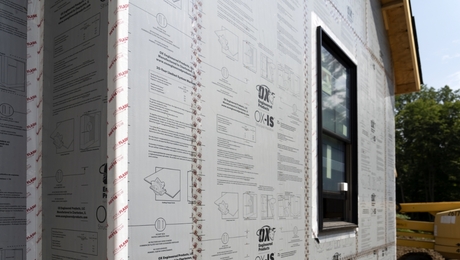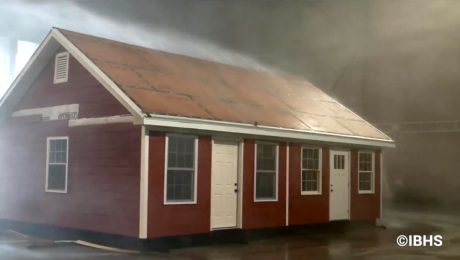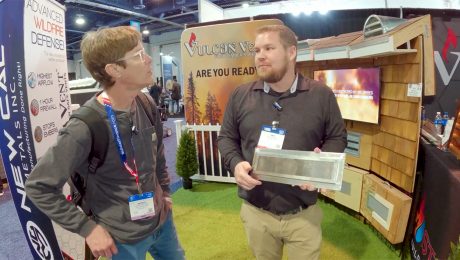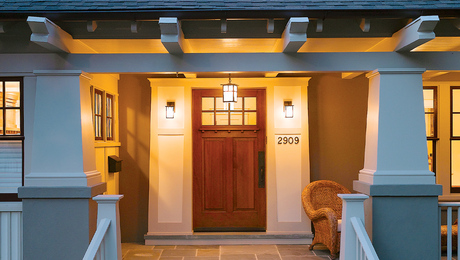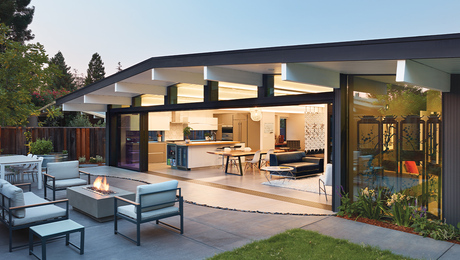The Fine Homebuilding Interview: James Metoyer
This workforce trainer brings a holistic approach to healthy living to the homes and communities of Oregon.
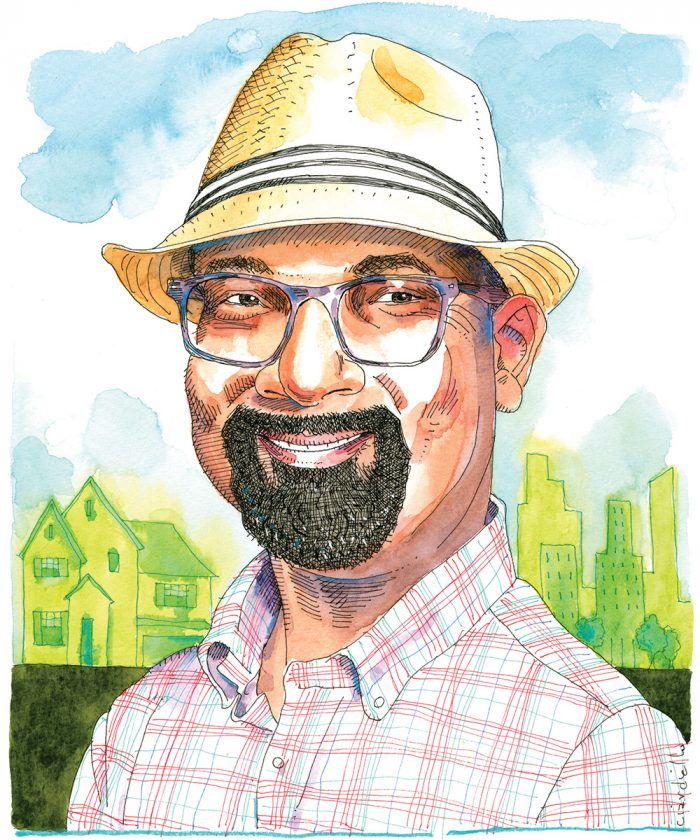
Synopsis: James Metoyer sat down with Fine Homebuilding’s contributing editor Aaron Fagan to talk about how his journey in green building began, his thoughts on the mainstreaming of climate justice, the mission of his organization EnerCity Collaborative, and the importance of ensuring that BIPOC communities have equitable access to healthy, sustainable, and energy-efficient housing.
James Metoyer, executive director of the Oregon-based nonprofit EnerCity Collaborative (ECC), works with youth and adult construction-training programs, community-based organizations, and other nonprofits to help professionals find careers in weatherization, residential energy auditing, deep-energy retrofitting, and net-zero building, and to ensure that BIPOC (black, indigenous, and people of color) communities have equitable access to healthy, sustainable, and energy-efficient housing.
Before launching ECC, James worked in several capacities (most recently as workforce development training manager) at Earth Advantage (EA), a Portland, Ore.–based nonprofit with a mission to create an informed and humane residential real-estate marketplace. He helped develop and deliver the Green Building Trainee Accreditation at EA to youth training/pre-apprenticeship programs across Oregon that serve historically underserved and under-represented populations in the construction industry.
A son of the Cane River Créole community of Isle Brevelle, La., with more than 11 years of experience working in energy efficiency, James has earned several industry-recognized credentials, including Building Performance Institute (BPI), Performance Tested Comfort Systems (PTCS), Home Energy Score, HERS Rater, and LEED Green Rater. His passions are teaching students about energy efficiency, bridging the gap between the medical industry and the built environment to create healthy outcomes, and working to ensure that historically underserved communities have equitable access to healthy, safe, durable, sustainable, and energy-efficient housing.
AF: Where did your journey in green building and energy efficiency begin?
JM: My introduction to the energy efficiency industry was over three decades ago when I began working as a helper for my father’s HVAC company. I remember going into people’s homes—both rich and poor—to replace or repair their HVAC systems, which led to increased comfort and safety. This had a profound effect on me as I saw the joy on people’s faces once their unit was repaired. I’ll never forget how impactful that work was on people’s lives.
Fast-forward to 2009. I enrolled in Portland Community College (PCC) and graduated in 2011 with an associate degree in building-construction technology. When I graduated, there was a scholarship program I connected with through Worksystems that partnered with Clean Energy Works Oregon called the Green Careers Training Project. The program paid for three credentials over the course of eight weeks through the Building Performance Institute (BPI): Building Analyst, Envelope Professional, and Residential Building Whole House Air Leakage Control Installer. This was a program (partly funded by the American Recovery and Reinvestment Act) to help BIPOC, underrepresented, and low-income folks get trained and placed with jobs in the construction industry.
Over the next five years, I increased my building-science knowledge, skills in energy auditing, and ability to diagnose health and safety issues in existing homes. This included, but wasn’t limited to, completing residential energy audits to BPI’s standards and protocols; weatherizing (i.e., installing insulation, air-sealing, duct sealing); creating scopes of work, budgets, estimates, and contracts; closing sales; scheduling; and performing in-house quality assurance.
After learning a lot about retrofitting existing residential homes, I took my skills to new construction, and that’s when I took the job as technical field consultant at Earth Advantage. In my first year of employment, I attained the Residential Energy Services Network (RESNET) Rater and Leadership in Energy and Environmental Design (LEED) Green Rater credentials. These credentials allowed me to deliver third-party verification of the EA New Homes certification program, along with LEED certification on residential and commercial buildings across the state of Oregon.
In 2018, I was promoted to senior technical field consultant and was certified as a Home Energy Score assessor. I became one of the lead Quality Assurance Designees to help deliver third-party quality assurance verification of Home Energy Scores on behalf of the City of Portland and the Oregon Department of Energy.
I’ve kept growing from the minute I stepped foot in this industry. When I was introduced to the connection between energy efficiency and healthy homes, that’s when it all came together for me.
AF: Was your personal awakening to the role healthy homes play in large-scale social and environmental issues sudden or gradual?
JM: That was gradual. I guess it was kind of something that I always knew, but when I really started digging into the indoor-air-quality aspect of the energy-efficiency work I was doing, I found out how they are so interconnected. I was enthralled with all the work that was coming down the pipeline and how it was something that really made a difference in people’s lives. I started to go down that rabbit hole to learn more about energy efficiency and doing home-performance work.
That’s why I started working at Earth Advantage. EA is focused on helping to create an informed and humane residential real-estate marketplace. While EA works in many areas of the built environment, I worked on the education team to help deliver workforce training to advance the development of a knowledgeable and diverse workforce that will help build and remodel climate-friendly homes.
AF: I’d like to hear about your former role as a workforce development training manager with EA. What does a green workforce mean to you?
JM: Having a green workforce means training people in BIPOC communities and those who are seriously underrepresented in the construction trades so that they can fully realize a clean-energy economy for themselves, their families, and their communities, and it means helping them understand the different avenues into jobs. This is about helping people from underserved and underrepresented communities gain access to living-wage jobs that will create generational wealth and combat gentrification.
A green workforce is also about helping people gain the skills and qualifications that meet national standards for doing home-performance work. Unlike the unions in the commercial sector where there is a very structured process to career advancement as an apprentice, that is not the case in nonunion, residential work. We’ve worked on defining pathways for students wanting to go into the residential sector, as there are a lot of different certifications and credentials to navigate. We offer mentorship, job-shadowing, and coaching to help them navigate their career path.
AF: I am curious if you’re encouraged or cynical about the mainstreaming of climate justice. Governments and corporations often adopt certain values as a fashion with no quantitative or qualitative intention to back up the bluster.
JM: I think climate justice should be front and center. But I agree there are those larger companies that in essence are greenwashing the work they’re doing. Organizations should be called out for making themselves seem green when they’re actually polluting and not living up to some of the purported messaging they’re trying to put out there. There should be more responsibility and accountability in that regard.
AF: You mention accountability. It makes me think of the distinction between having building codes and enforcing them, which seem to be two totally different animals. Most states and local jurisdictions often lag significantly in adopting or enforcing the latest codes.
JM: In my opinion, most states need to update their codes and adopt more stringent energy-efficiency codes. Regarding enforcement, most building inspectors are trained to identify mechanical, electrical, plumbing (MEP), and structural issues, not energy inefficiencies such as poor insulation installation or air-sealing details. Education and training are needed to help inspectors identify and call out these details. It’s also about making changes at a state board level, because often you have a 70-year-old white male who has served on a board for many years, and when he retires, the board seat is then passed on to a 45-year-old white male. It’s a matter of educating and getting people involved enough to know, “Hey, these decisions are being made in rooms where people of color aren’t represented a lot of the time, and some of these state boards are making decisions that affect your energy bill, that affect your health, that affect your housing.”
By educating people and getting them more involved, we can hopefully help make that change, because if people are demanding it, then that might change some minds about where building codes need to go. For example, I’ve collaborated with a group called Build/Shift that has been hard at work determining goals and values for improving affordability, health and safety, climate resilience, equity, and sustainability in Portland’s residential buildings.
The result of this collaboration is a proposal to establish minimum requirements for existing apartments that address what we call HEART standards:
- Healthy housing: Require natural-gas stove ventilation to improve indoor-air quality.
- Equitable energy: Limit carbon emissions for apartments, condos, and commercial buildings by improving energy efficiency or increasing the renewable energy supply. Reduce the energy cost burden for low-income tenants.
- Anti-displacement: Prevent the risk of displacement when improvements are made.
- Resilience: Make buildings and communities resilient to power outages.
- Temperature: Set maximum indoor temperatures for heat-wave resilience.
Our work moving forward will apply these standards to rental apartments, particularly for low-income and BIPOC Portlanders.
AF: Where do you see the construction industry in the next five years? There’s talk about the sheer number of people who will be putting down their tool belts, and workforce is a big part of the puzzle.
JM: I completely agree. With so many of the people in the trades soon to retire, I’m hoping over the next five years—and this is part of the work that I do now—the knowledge from the people who have been in the trades for decades gets shared and becomes a part of the core knowledge for new people in the industry. That’s the goal, versus a situation where the veterans retire and that information is then forever gone with them.
A key piece over the next five years is making sure that we bolster and create opportunities for mentorships to happen, for internships to happen, and for younger professionals to engage and interact with folks who are on their way to retiring. There’s a huge opportunity to cultivate programs and build capacity within businesses to pass along the skills and trades from one generation to the next so that they can learn the old-school ways while incorporating the best green-building techniques and practices along with more tech-savvy elements.
For instance, with COVID there has been a big push for remote inspections and assessments. There’s going to be more technology like crawlbots and drones that will be involved in the construction industry overall. That means there will be a lot of opportunities for younger folks or people who are changing careers to get in at a good time and be able to move up very quickly in careers that are centered around green building and energy-efficiency work.
AF: What’s the mission of EnerCity Collaborative, your new initiative, and how did it come about?
JM: The Portland Clean Energy Community Benefits Fund (PCEF) is a community-led initiative, and it is the first environmental initiative in Oregon led by communities of color. Providing benefits to specific populations is central to the PCEF program and aims to help people with low incomes and people of color access grants that address clean energy, green infrastructure, and regenerative agriculture. The PCEF also aims to address workforce and contractor-development issues for women, people of color, people with disabilities, and people who are chronically underemployed.
After plenty of internal reflection and discussions with colleagues, I decided to start a new nonprofit that could support the goals of the PCEF. Folks entering the construction trades don’t know about the different opportunities in those trades specifically related to energy efficiency.
At ECC, we want to expand green workforce training and contractor development by specifically concentrating on weatherization, energy auditing, building-science principles, electrification, and deep-energy/net-zero retrofits. ECC’s mission is to ensure that the financial, environmental, and health benefits of a clean-energy economy are fully realized in BIPOC, underserved, and frontline communities. Our advocacy and support of policies and initiatives ensure that underrepresented voices have a seat at the tables where they have historically been left out, where conversations about power, electricity, natural gas, and the built environment take place.
I learned early on in my career that educating homeowners on the principles of healthy homes becomes a real motivator for people to make changes in their homes, especially if there’s funding to help. An issue in previous programs I’ve worked with was that you can educate people and help them make more informed decisions about the health of their homes, but if they don’t have money to fix these things, you’ve left them in a tough position. When you can offer someone a solution and say, “We found out what’s wrong with your home, and we also have some money to help you fix it and make it right,” that’s a game-changer. “And your son wants to learn how to do it? Tell him to come on over. We’ll train him to do this work as well.” It just hits on so many levels.
AF: It’s not just about physical health or the health of the materials that are going into these homes, but about healing communities and creating opportunities.
JM: Absolutely. The current industry needs to get out of ad hoc thinking—the notion that to correct one measure or one aspect is going to fix comprehensive issues. A more holistic view is needed. For instance, if you are recommending insulating without air-sealing, you are not doing your company, the industry, or the homeowner any favors. You are not helping them understand the energy and health consequences of those recommendations. It should be about helping homeowners make the most informed decisions about keeping their families healthy. What the future brings for residential building or even the built environment is coming at things from a more holistic approach, because now we understand the building science of how all these systems interplay and how they can have positive or negative outcomes, which relates right back to the healthy conversation.
AF: Do you have some closing thoughts that you’d like to share?
JM: I was just appointed by the governor to the Interagency for Healthy Homes Task Force for the State of Oregon. I point that out because I’m very optimistic for what the future holds. I look forward to seeing more of the smart homes we all know we can build and just need to make more mainstream. We can build homes to be more energy efficient, more healthy, and more interactive with the occupants of those homes. We can build them to be smaller yet functional. All these opportunities give me optimism and hope for the built environment as we move into the future. I look forward to being a part of that and training the next generation of people who will be doing that as well.
Aaron Fagan, a former associate editor for Fine Homebuilding, is a senior editor for Gear Technology and Power Transmission Engineering magazines.
RELATED STORIES
